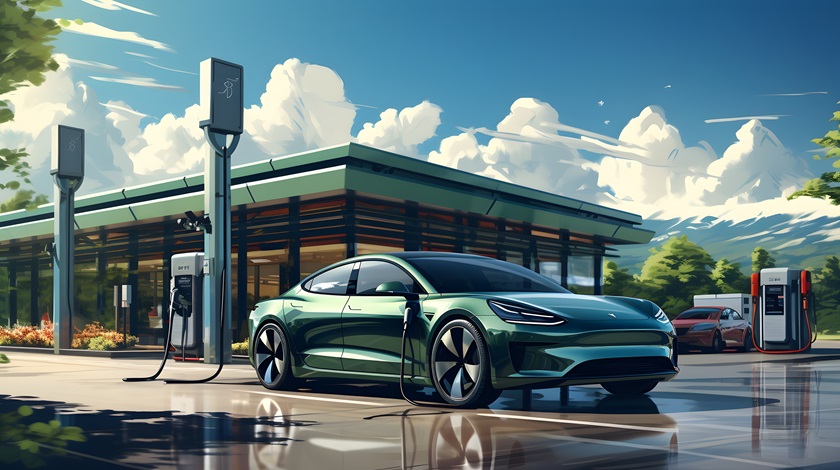Wireless EV charging technology is emerging as a transformative solution in the electric vehicle (EV) sector, offering a new level of convenience and accessibility for EV drivers. Traditional plug-in EV charging, while effective, poses limitations related to accessibility, durability, and the physical upkeep of charging stations. In contrast, wireless EV charging operates on inductive charging principles, which use magnetic fields to transfer energy from a charging pad installed on the ground to a receiver in the vehicle, removing the need for cables. This innovation is poised to make electric mobility more seamless and accessible, especially in urban environments and fleet applications.
How Does Wireless EV Charging Work?
At its core, wireless EV charging operates on inductive or resonant technology. Charging pads, embedded either in the ground or in a surface, create an electromagnetic field when connected to a power source. Vehicles with a compatible receiver pad are able to absorb this energy when parked over the pad, enabling efficient charging without the need for physical connections. This system requires minimal alignment, as the electromagnetic fields cover enough space for slight vehicle misalignment, making it a practical and user-friendly option for drivers of all experience levels.
Key Benefits of Wireless EV Charging Technology
One of the most significant benefits of wireless EV charging is convenience. By eliminating cables, drivers don’t need to handle heavy cords or worry about cable wear and tear. This can be especially advantageous for EV fleets, which often require quick, reliable, and low-maintenance charging solutions. With wireless technology, fleet operators can park vehicles and start charging immediately, reducing downtime and simplifying logistics.
Another major benefit is durability. Since there are no cables or plugs to wear out, the technology is well-suited for areas with high traffic and weather exposure, where traditional stations may face maintenance issues. Wireless charging pads are often installed below the surface of roads, protecting them from weather, vandalism, and general wear, which can extend the equipment’s lifespan and reliability.
For cities and infrastructure planners, wireless EV charging also supports a cleaner and more streamlined urban environment. As the pads are flush with the ground, they don’t obstruct pedestrian walkways or parking spaces, making it easier to integrate EV infrastructure into dense urban spaces and creating a more visually appealing environment. This also supports the adoption of electric buses and public transportation, as wireless charging can be embedded along bus routes, providing top-up charges without interrupting service.
Wireless EV Charging Technology in Smart Cities
In smart cities, where technology integration and sustainability are priorities, wireless EV charging technology holds immense potential. Wireless charging stations can be embedded in roads, parking lots, and even residential areas, offering drivers a more seamless experience and reducing dependency on traditional charging infrastructure. This could transform urban areas by creating highly accessible charging points that work for various types of vehicles, from cars to electric buses.
Wireless EV charging aligns perfectly with the goals of modern urban planning, offering both functionality and aesthetic appeal while supporting sustainability. For instance, cities can use renewable energy sources, like solar power, to supply energy to these inductive charging systems, making them part of a holistic green solution.
Challenges and Future Prospects
Despite its benefits, wireless EV charging technology is still evolving, with some challenges remaining. High installation costs and infrastructure requirements have limited its widespread adoption. Moreover, efficiency can vary depending on the quality of the connection between the charging pad and the vehicle’s receiver, meaning further optimization is necessary for consistent performance. However, as technology advances and costs decrease, these issues are expected to lessen, paving the way for broader adoption in public, commercial, and residential spaces.
The future of wireless EV charging technology is promising, with ongoing developments making it more accessible and effective. With this technology, we could see a more integrated, accessible, and sustainable approach to electric mobility. As cities continue to grow and evolve, wireless charging could be a central component in creating cleaner and more efficient urban environments.




